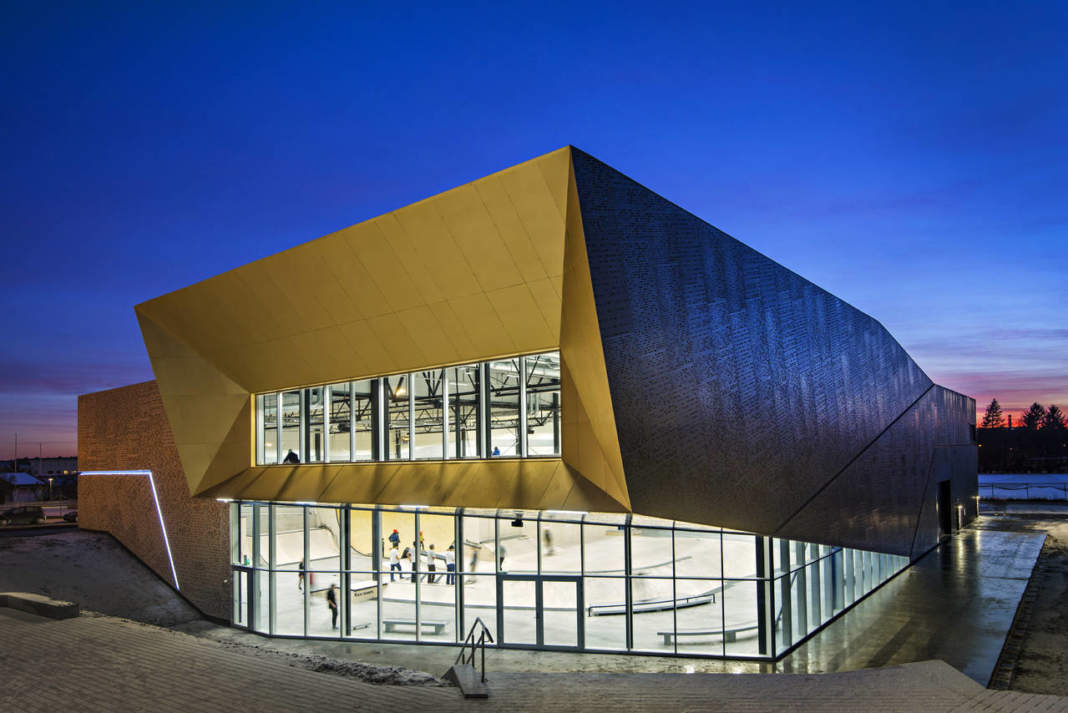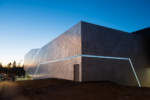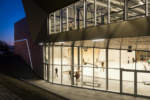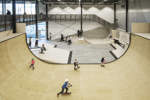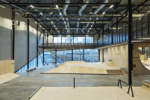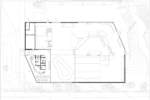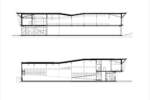architect: DARK Arkitekter AS
location: Oslo, Norway
year: 2017
Skateboarding was banned in Norway on 1 September 1978, with the intention of preventing serious accidents. This did not discourage the skateboarders, and the skateboarding scene grew steadily. When the ban was lifted in 1989 the interest exploded. Skateboarders went from being lawbreakers to celebrities and youth idols. In January 2017, 28 years after the ban was lifted, Oslo finally got its own custom-built venue for the today a well-established sport. Oslo Skatehall stands now as the best custom-designed skatepark, and one of the largest of its kind in northern Europe. The architectural signature of the building is conceptually rooted in the elements and movement of skateboarding, thus exposing the hall’s function. The structure is dominated by two distinct and contrasting volumes, one light and one dark, which share the same architectonic language. These two structural elements form cantilevers, inclined in opposite directions to the underlying terrain. Raised in the east and west, they create dynamic diagonal lines in the landscape.
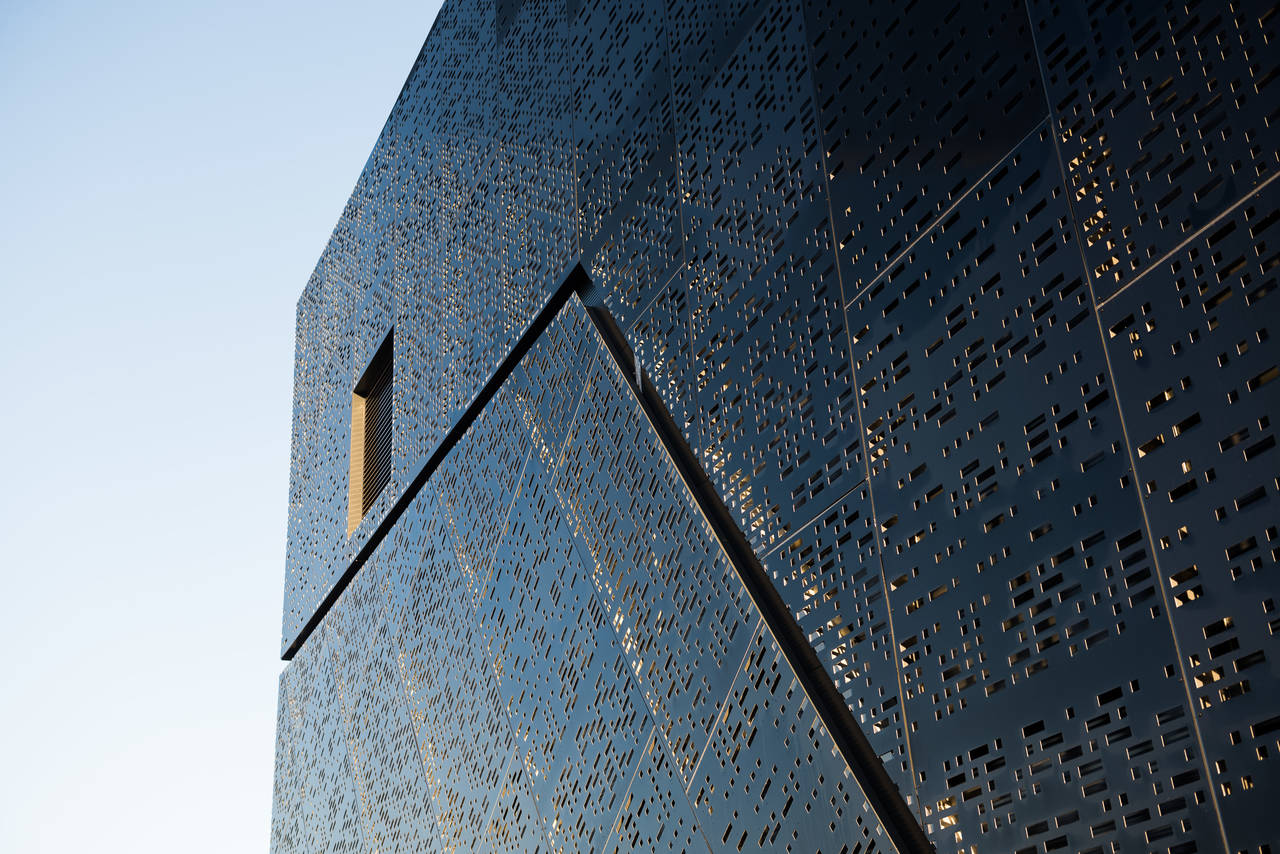
Each cantilever has broad borders of golden metal sheeting, accentuating the dramatic forms and providing frames to the large, glass panels. Visual contact between interior and exterior is maintained through these glass facades, presenting a tantalizing impression of the building from a distance and allowing viewers outside to follow the action inside. The connection between interior and exterior space, coupled with good legibility in the layout, create a sense of security, clarity and order. The spacious dimensions of the hall give participants and spectators full access to the activities, which can even be observed from the café, making this an attractive vantage point. The skatehall is situated in a prime location, surrounded by large outdoor recreational areas in Voldsløkka, part of Oslo’s Sagene district. The main entrance faces west and leads directly into the lobby and café, which are clearly visible through the glass façade in the south-west corner of the building. The huge cantilevered elements create a natural shelter over the entrance and outdoor seating area. In the summer months, the café opens up to this outside space and invites you to sit in the sun at tables or in the concrete amphitheatre which is set into the hillside beyond. To the east of the building, a terraced skatepark connects the different levels of the terrain, linking the concrete park at the base to Voldsløkka’s prime walking path at the top. From the amphitheatre and walking path, skating activities outside in the park and inside the hall can be experienced simultaneously. When the gates and doors are opened, these interior and exterior skating spaces become fully connected. This distinctive feature of the building creates unique possibilities for major events and competitions. The dramatic lines of the structure are echoed in the outside facilities, which respond to the landscape, connecting with the wider spaces of the recreational area.
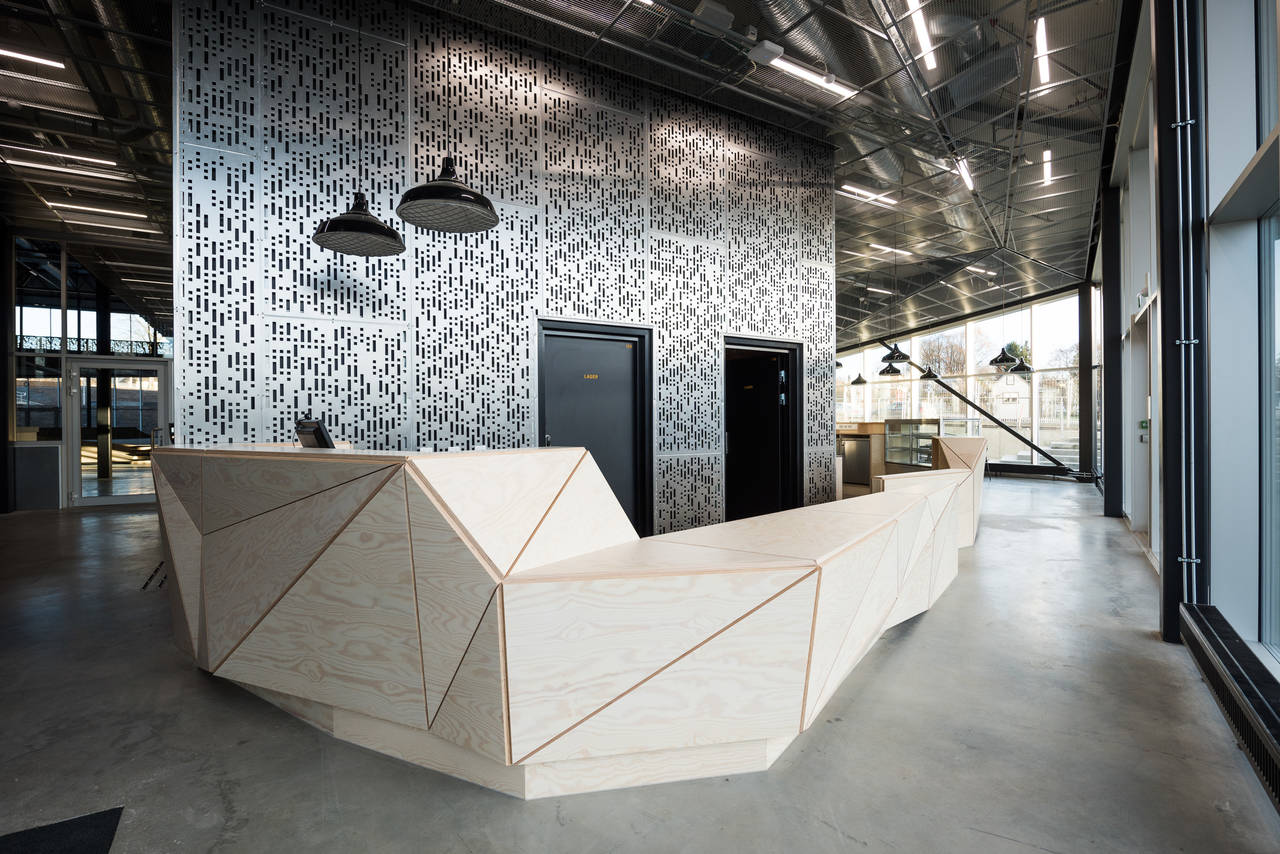
Oslo Skatehall is primarily intended for general use but boasts an international standard suited to major competitions. Inside, the hall consists of two tall storeys, where the programs are adapted to the functions of skating. This allows the hall to accommodate all the different types of skating under one roof. Variation and flow are guiding design principles in the complex layout. Input from skaters themselves, both young and old, has assisted the architects in finding the best solutions for infrastructure and design. The main skating activity is situated on the lower level, which features a high ceiling giving ample space to custom-built skating elements. These were designed and constructed jointly by Glifberg+Lykke and IOU Ramps. A unique feature of Oslo Skatehall is the raised bowl, constructed in wooden materials. The structural elements of this burgeoning organic form can also be viewed from underneath. On the upper level, a separate viewing gallery spans the entire length of the hall, allowing spectators a clear overview of skating activities below. Visitors can play TV games, watch YouTube clips and edit films in the combined activity and media room. This space can also be used to hold seminars or host visits from kindergartens and schools.

There is a raw honesty to the materials selected, which creates variation in the surfaces and structures. Perforated aluminium sheeting in dark and light nuances covers the facades, ornamented with a surface pattern of Morse code symbols. These are a literal transcription of the 1978 law forbidding the use, sale and advertising of skateboards, commemorating the history of skateboarding in Norway. Morse code symbols also feature in the café and service areas but here the patterns convey slang terms and tricks used by the skating community.
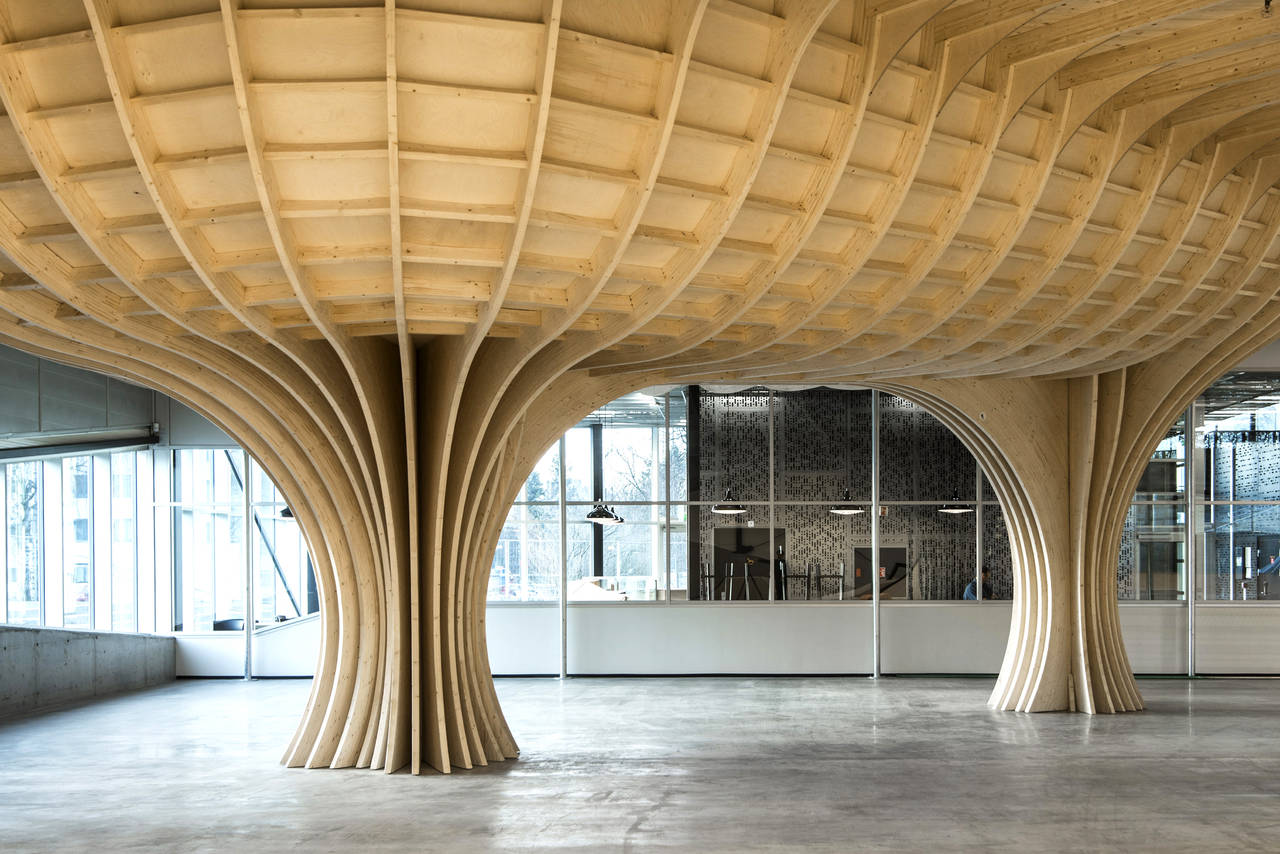
The hall has been constructed in accordance with Passive House standards, with a focus on recycled materials, life-cycle costs (LCC), air circulation and sustainable energy sources. The end result is a holistic expression of function and space, in which impressive static spaces alternate with effective evacuation routes. Visible construction details have been integrated into the overall design, as a feature in their own right. Building information modelling (BIM) has enabled all participants in the project to collaborate successfully, from service providers, management teams, contractors and advisors down to the actual users of the facilities, each contributing their individual expertise. This collaborative approach has allowed us to achieve the best solutions to the challenges that arose during the planning and construction process; mutual dedication to quality from all involved is central in the successful result we see today. Oslo Skatehall is a salute to youthful values, its fully-integrated holistic design oriented towards the future. The interaction of the building mass with the outdoor venues and surrounding park landscape are symbolic of the interaction between different generations of users, both performers and spectators, now and for many years to come.
location: Stavangergata 28, Oslo, Norway
year: 2017
architect/interior architect: DARK Arkitekter AS
landscape architect: Rambøll/Landskapsfabrikken
interior skateboard elements: Glifberg+Lykke/IOU Ramps
client: Kultur- og idrettsbygg Oslo KF
contractor: Varden Entreprenør AS
surface: 2.300 mq + 640 mq skatepark esterno
photographs: Finn Ståle Felberg/Kultur- og idrettsbygg Oslo KF, Lars Gartå/DARK, DARK


